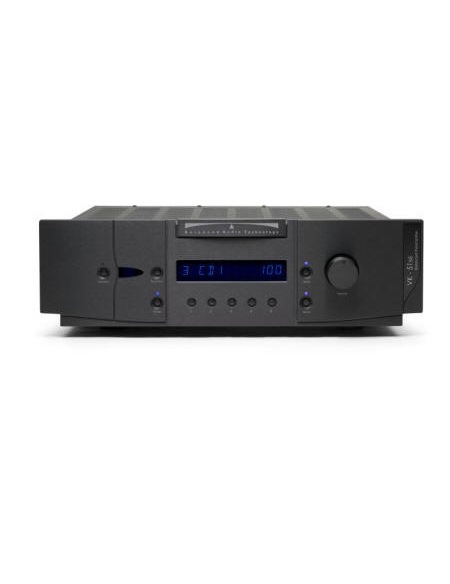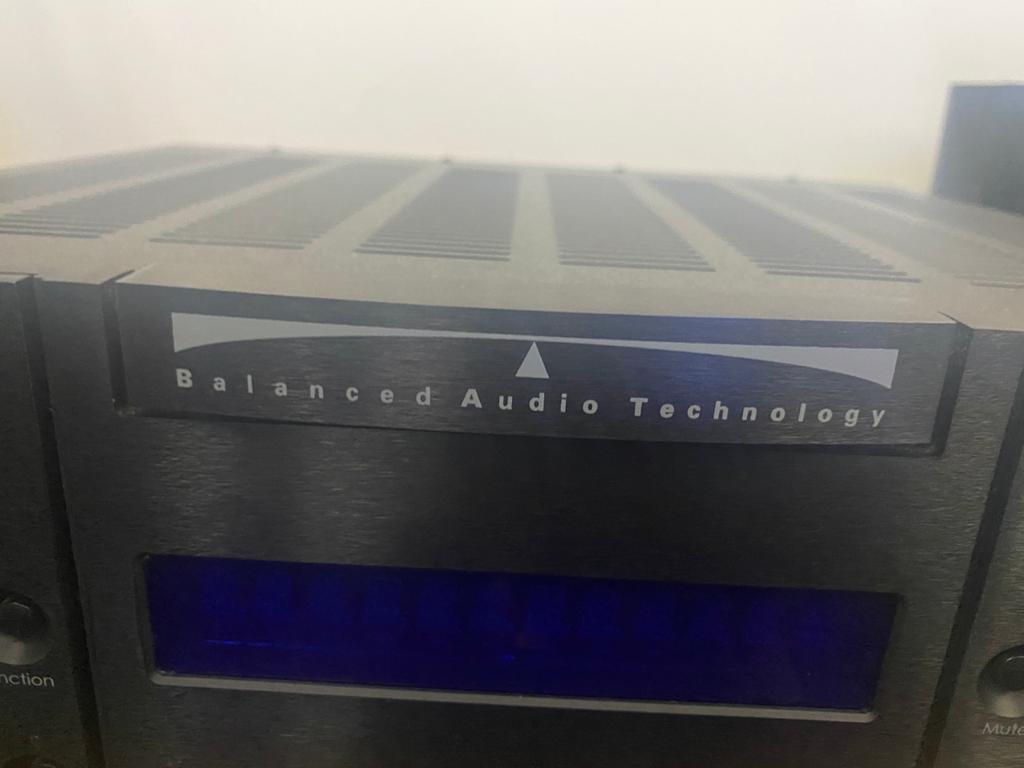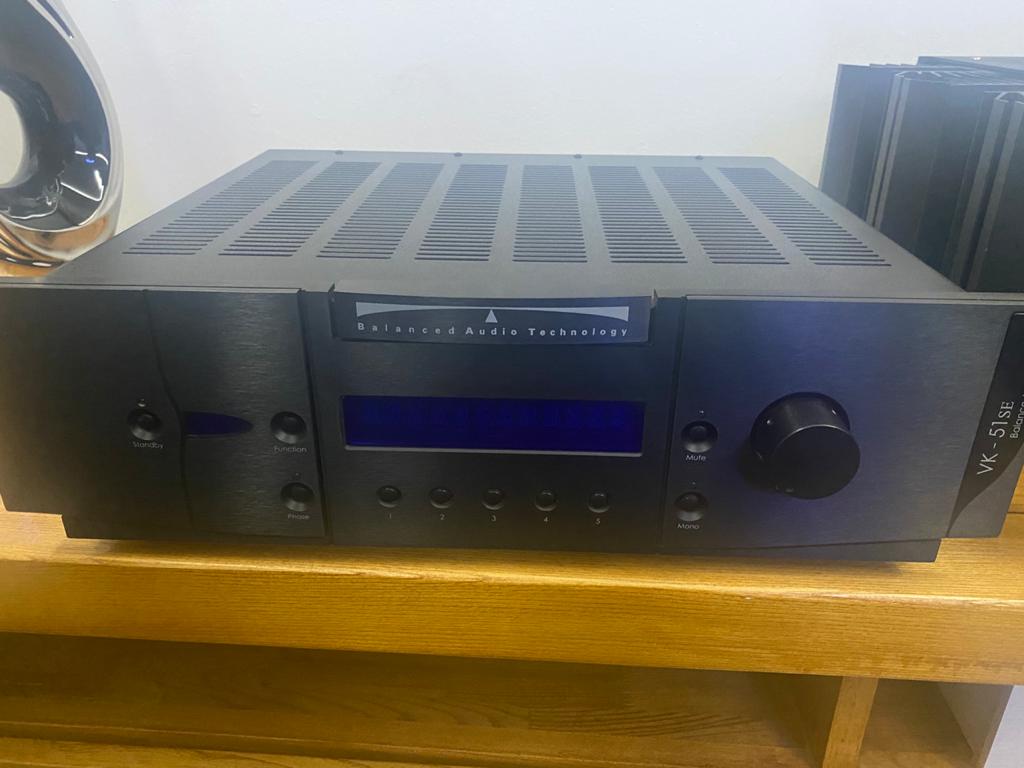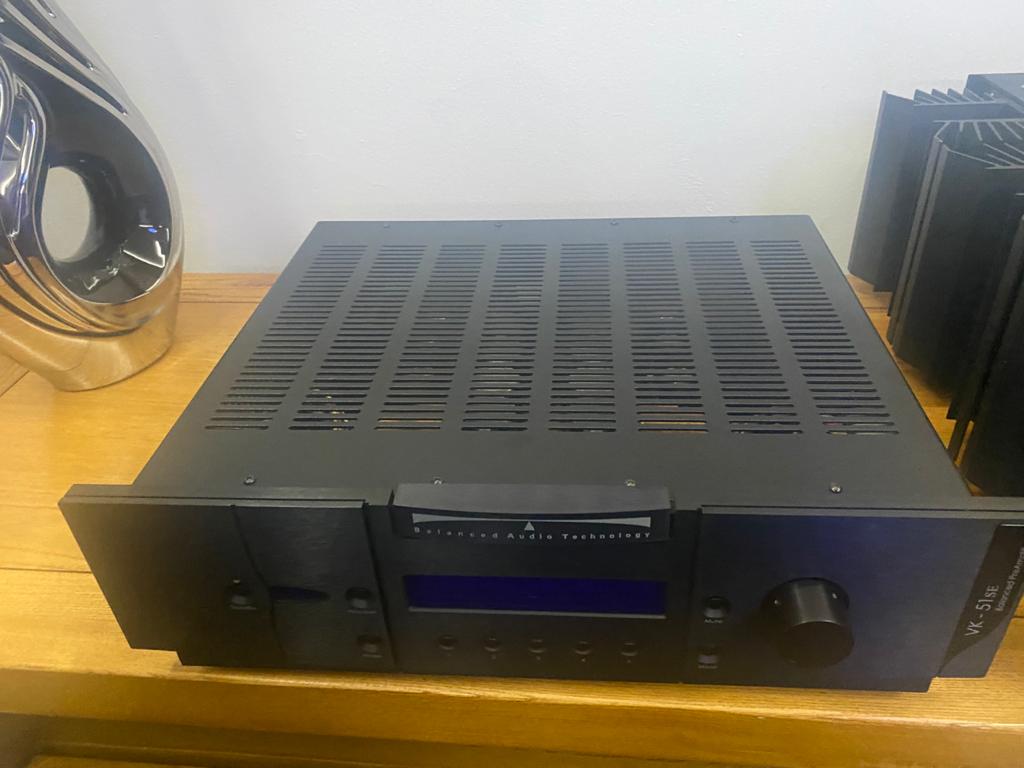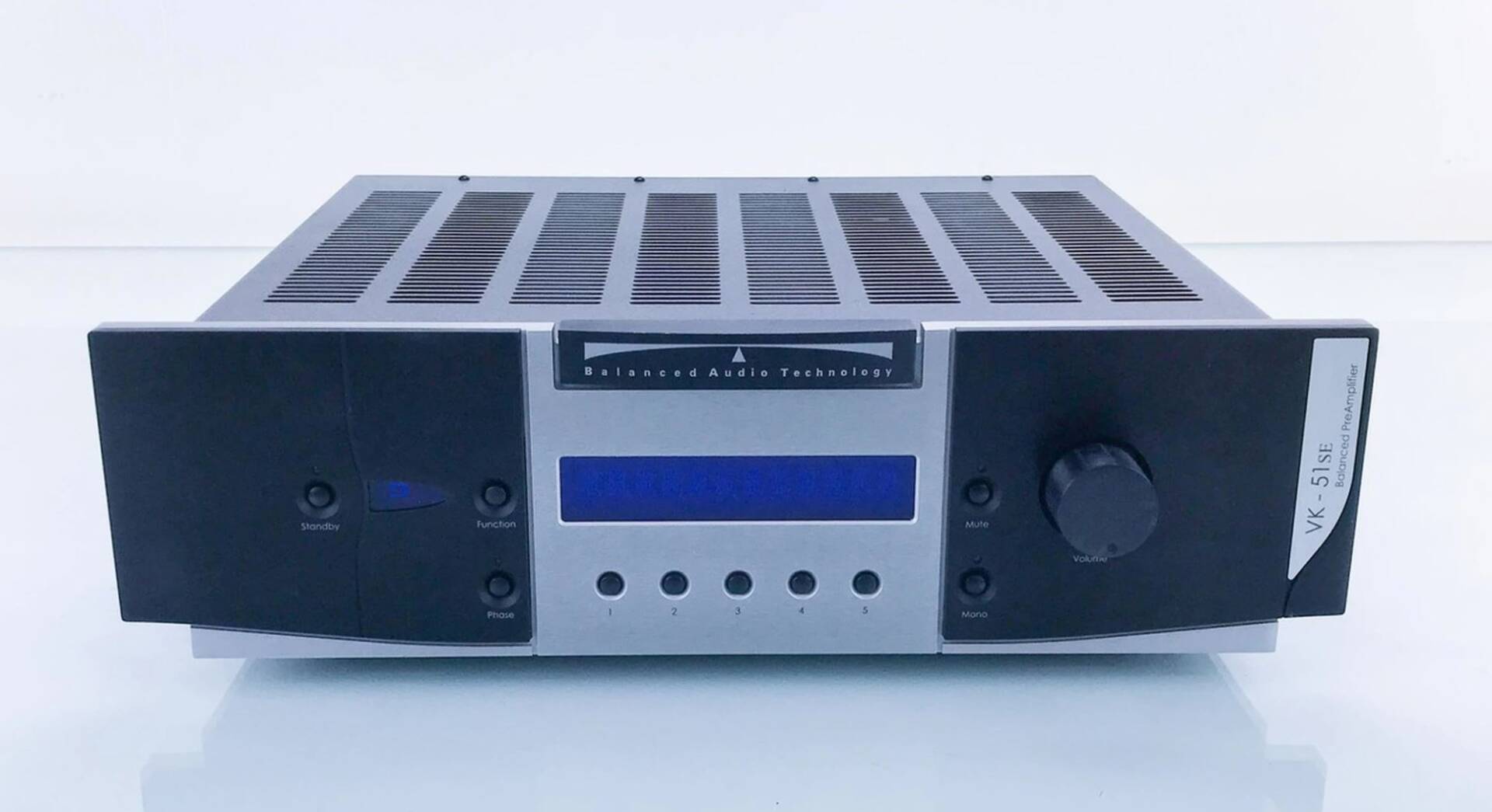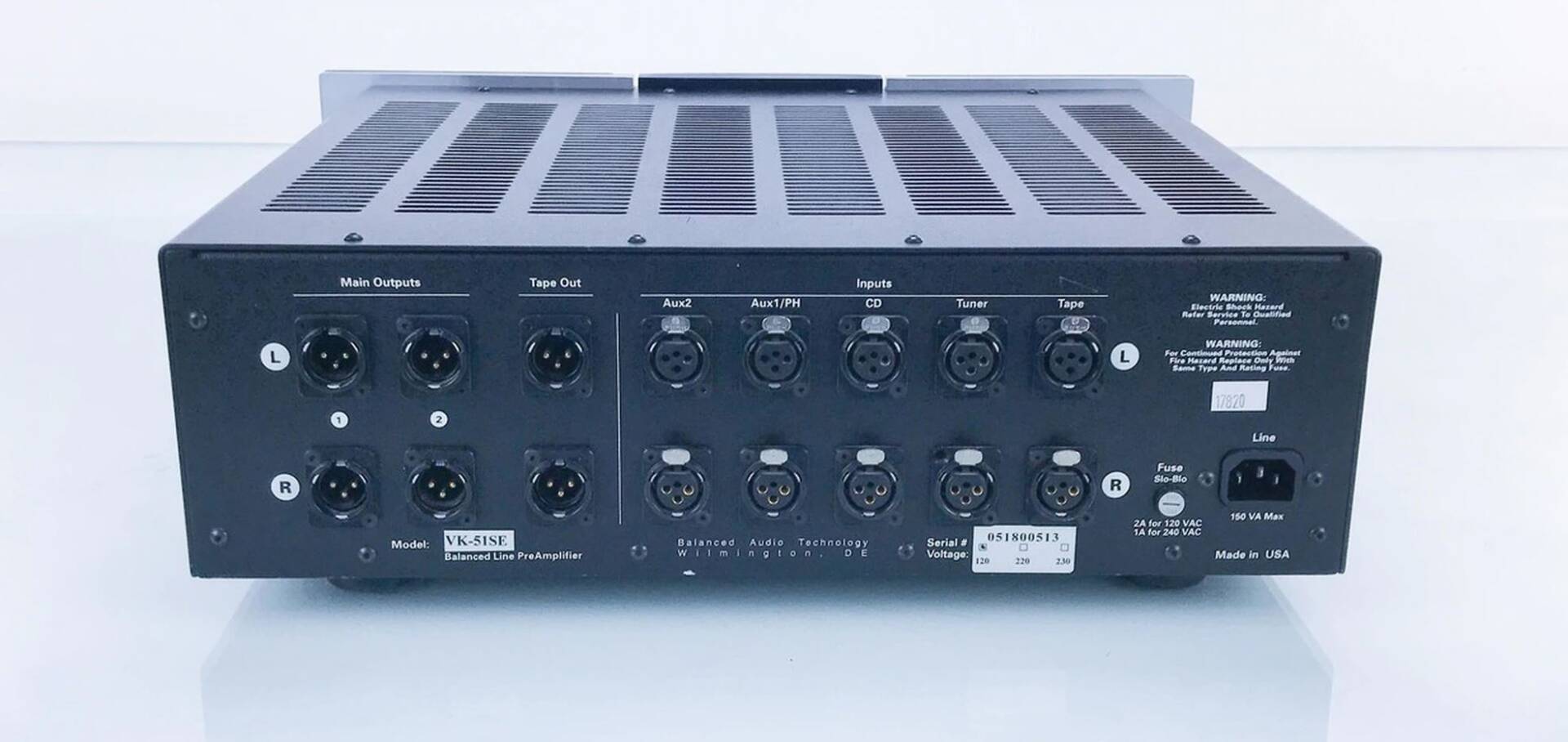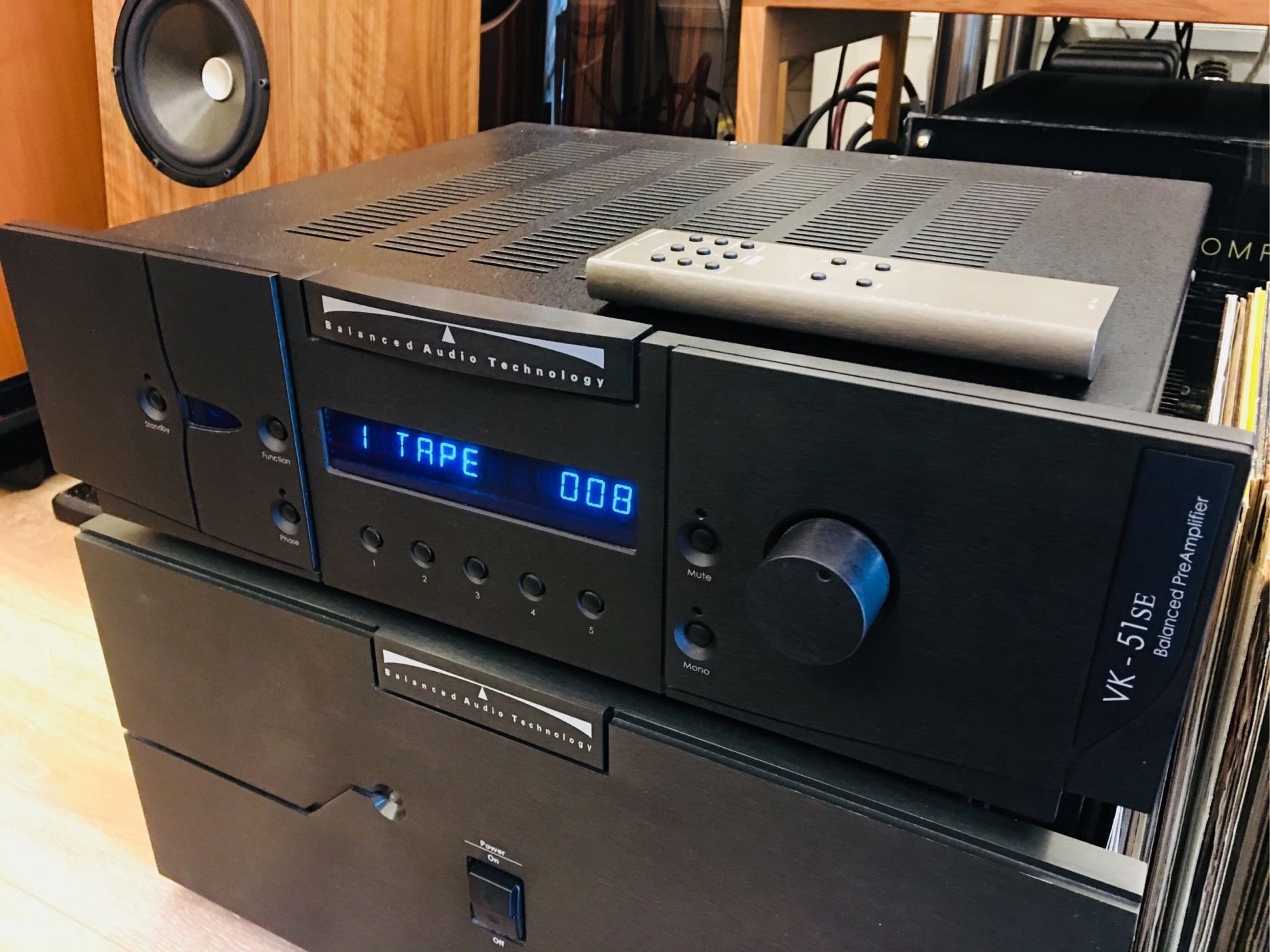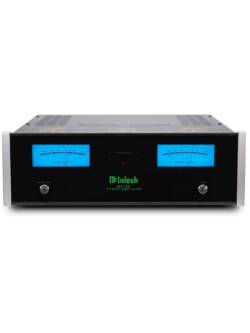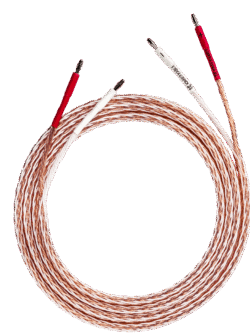BAT VK-51SE Preamplifier
R38,000.00
The VK-51SE is on the short list of the world’s best line preamps: a Class A component.
Though the BAT adored power music, it was also the most agile and flowing of dance partner to more gentle fare. Take Delius, for example. For me, Delius’ music has always been an exaltation of and profound reflection on what are seemingly the most ordinary emotions. In his world, deep and complex beauty lies just beneath the surface of the apparently commonplace. It is the musical equivalent of a Constable pastoral, in which we see for the first time the specialness of things usually taken for granted.

The BAT’s ability to flex its mighty muscles so effectively made me wonder how it would fare with the likes of Delius. The temperate shadings and complex inner voices of On Hearing the First Cuckoo in Spring were as gentle and delicate as a loved one’s touch (Neville Marriner, Academy of St. Martin-in-the-Fields, UK LP, Argo ZRG 875). The flute and woodwinds in Summer Night on the River were luscious and juicy, the cello’s wood and rosin almost literally palpable. The ’51’s exceptional way with dynamics was just as apparent with this reflective music. If you have never before heard the difference between pp and ppp, the big BAT will educate you. Its deeply quiet backgrounds allowed every mote of sound to emerge effortlessly. Clarity and transparency were consistently top-shelf.
There was a very slight darkness to the BAT’s sound, though less of it than I have heard from other BAT gear. It did not reduce resolution in any way; its effect was primarily apparent when I listened to orchestral music, and was somewhat reminiscent of a similar quality I’ve heard in Lamm electronics. I perceived it as a slight absorptiveness of background that threw each instrument or group of instruments, such as string sections, into slightly higher relief, with an equally slight diminution of the sense of total ensemble. This was reminiscent of solid-state more than of tubes, which tend in the direction of slightly greater holism of presentation, as I hear it. This was not a troublesome issue, and may strike many as perfectly reflective of what they hear in concert hall. It was such a small issue that it may have simply been an artifact of how the VK-51 paired with the speakers and wires I used when listening to it; ultimately, it’s a small matter of taste.
Soundstaging was exceptionally good in all three dimensions, and always true to the recording. The stage of Chicago’s Symphony Hall was very broad and quite shallow on the Reiner/CSO version of Debussy’s Iberia (LP, RCA/Classic LSC-2222), just as it should be. The BAT didn’t sweeten recordings with any extra sonic beautifying; while the magic of tubes was there in spades, the VK-51 wasn’t not a wildly romantic, rose-colored lens. Pink Floyd’s Pulse (UK LP, EMI 83278-1) places you in the best seat in the stadium, and the enormous sizes of the venues in which it was recorded were immediately apparent. The scale of music, and not just the size of the venue, was steadfastly wonderful with the ’51. New Order’s “Crystal,” from Get Ready (CD, Reprise 89621-2), is a massive, churning wall of sound; through the BAT, with the VTL MB-450 Signatures and Legacy Audio Focus 20/20s, this track was overwhelming in scope.
The BAT was also exceedingly good at capturing atmospherics. Listening to Rod Stewart’s Gasoline Alley (LP, Mercury SR61264) reminded me vividly what a great talent he used to be. The title track is an exquisitely sad lament, with the jangling chime of the acoustic guitars, the whine of Ronnie Wood’s slide guitar, and the delicate embroidery of the mandolin all coming together in a wonderfully evocative way. The unselfconscious honesty in Stewart’s voice serves as a blue reminder of what he once was, and of the buffoon he has become in his later years. On “Nine Feet Underground,” from Caravan’s Canterbury Tales (UK LP, Decca DKL R-8-1/2), the BAT emphasized the band’s earthier rock’n’roll aspects, whereas the VTL TL-7.5 placed a bit more focus on their psychedelic/pop side.

Joy Division’s Closer is perhaps the grimmest music I know, though for all its bleakness, it has surprisingly good sound and much dark beauty. Atmospheres and intangibles make or break this record as a total immersion in the heart of darkness, and the big BAT delivered: the ghostly isolation of “Decades,” with its immense, austere, and distant soundstage, seemed to encompass the angst of the world. Ian Curtis repeatedly asking “Where have they been?” had a terrifying sense of loss and finality. (Singer-lyricist Curtis took his own life shortly after this album was completed.)
The Lady or the Tiger?
When I listened to the BAT VK-51SE straight up against the standard-setting VTL TL-7.5 that I reviewed in October, the differences fascinated and engaged me. While their overall performances overlapped by +90%, the differences were readily apparent. The BAT was more lush, more sonically voluptuous, and paradoxically offered slightly sharper, almost solid-state-like image definition and bass extension. The VTL held the high ground in terms of absolute neutrality, while the BAT had just the smallest hint of residual darkness through the mids. The VK-51 also had an alluring sensuousness that recalled old-school tubes, but not their drawbacks.
The 6H30 tube has a striking ability to present the full harmonic palette with the intensely saturated colors that only tubes are able to provide, while demanding none of the sacrifices that usually accompany that timbral opulence. There was no lack of extension at either end of the spectrum. On the contrary, the VK-51SE handled the frequency extremes with casual ease and firm control.
After consulting my handy-dandy guide to Audio Components Interpreted as Classic Actresses, I would say the BAT’s style was more Sophia Loren, while the VTL leaned toward Grace Kelly. The BAT was earthier, the VTL airier. Where the BAT’s presentation was overtly sensual and abundant, the VTL was a bit more temperamentally and stylistically cool, but just as seductive. The BAT simply had a little more brazen va-va-voom in its character, especially at first hearing. Those sensational bass dynamics simply cannot be missed—but, spectacular as they were, the effect never sounded unnatural.
I’m not yet ready to come to any final conclusions about the relative merits of these line stages, as the ultimate competitor has not yet been evaluated. But this much is certain: The BAT VK-51SE came closer to unifying the disparate strengths of tubes and transistors under one roof than anything else I have heard. The VK-51SE is on the short list of the world’s best line preamps: a Class A component.
Description
Specifications
Inputs: 5 XLR
Main Outputs: 2 XLR
Tape Output: 1 XLR
Maximum Gain: 17 dB
Volume Control Resolution: 0.5 dB
Volume Control Number of Steps: 140
Frequency Response -3dB: 2 Hz to 300 kHz
Input Impedance – minimum each phase: 100 kO
Output Impedance: 200 O
Minimum power amplifier input impedance: 10 kO
With SIX-PAK䋢: 3 kO
Noise-unweighted: -96 dB
Distortion @ 2Vrms output: 0.01%
Channel to channel crosstalk @ 10kHz: -80 dB
Maximum output signal – RMS: 50 V
Absolute polarity: Switchable
Tube complement: 8 6H30
12V Trigger: No
Dimensions (WHD): 19″ x 5.75″ x 15.5″
Weight: 40 lbs.
